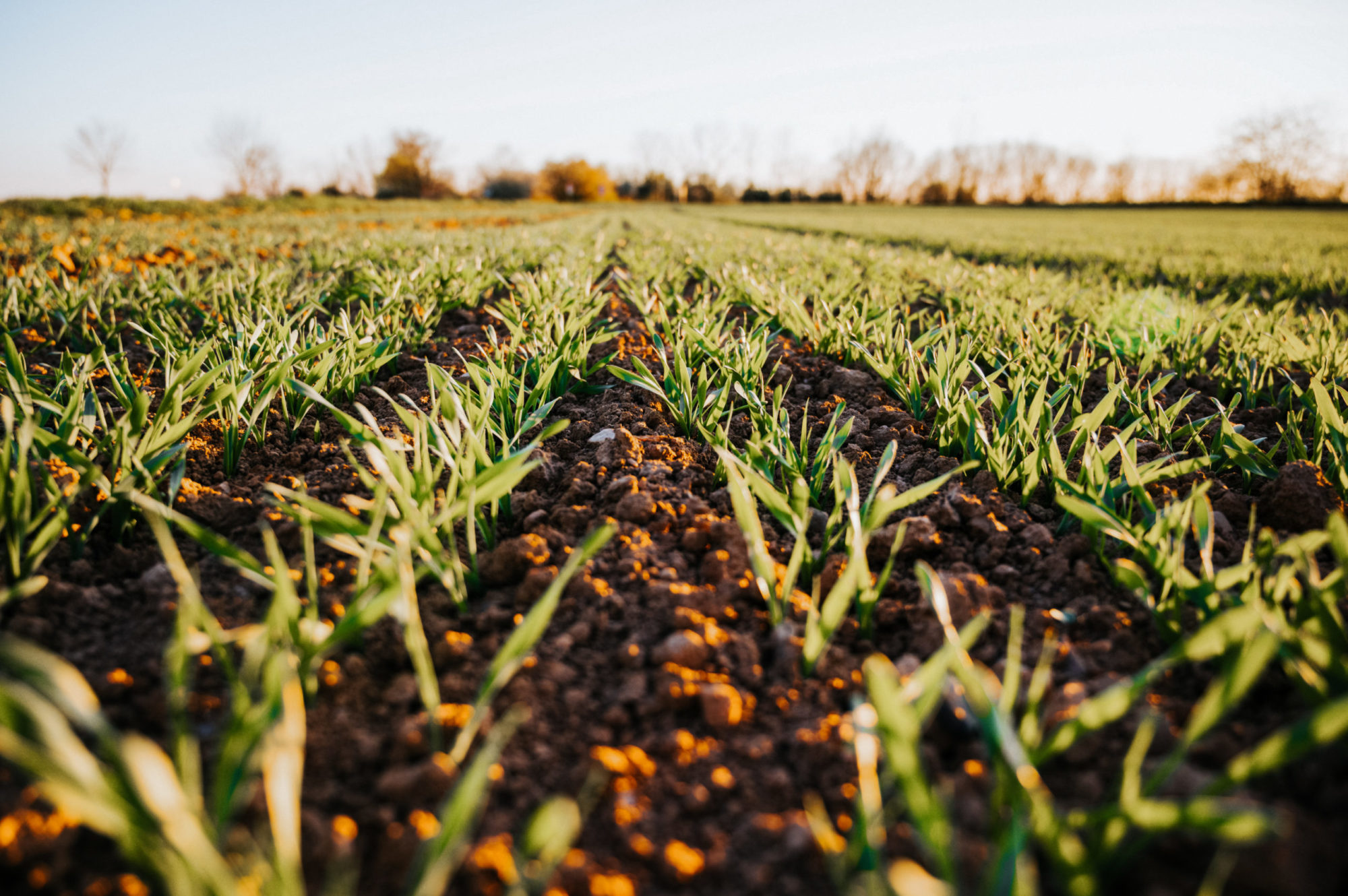Why Carbon Farming?
It’s no secret that dinner often comes with a side of climate change. Industrial agriculture contributes to habitat loss, desertification, and pollution, among a variety of other detrimental environmental effects. According to the Natural Resources Defense Council, Americans have an average of 43 different pesticides flowing through our blood, and manure management is responsible for 14 percent of all U.S. agricultural greenhouse gas emissions.
While some diners try to curb their carbon footprint through sustainable eating practices, farmers are minimizing their environmental impact before food gets to the table by practicing carbon farming.
What is Carbon Farming?
Carbon farming is an agricultural toolkit of practices designed to remove excess carbon from the atmosphere, where it contributes to our planet’s rising temperatures, and instead keep it in the soil, where it nourishes plants. Carbon farming methods often intersect with other sustainable farming practices like organic farming and regenerative agriculture that borrow from age-old Indigenous practices.
While specific carbon farming techniques vary by farmer and by crop, here are a few common practices:
- Rather than leaving their fields empty in the off-season, carbon farmers grow cover crops that blanket the soil. Cover crops extract carbon from the atmosphere and provide a host of agricultural benefits, like preventing erosion, introducing nutrients, and stifling weeds.
- Conventional tillage, which employs plowing and harrowing techniques, loosens soil particles, heightening susceptibility to erosion while also releasing carbon into the atmosphere. To avoid these adverse environmental and agricultural effects, carbon farming employs conservation tillage. Conservation tillage practices include no-till, which “leaves the soil undisturbed from harvest to planting” and stores carbon in crop residue. Ridge-till, which “involves planting into a seedbed prepared on ridges” also leaves the soil undisturbed apart from nutrient injection. Mulch-till, which involves tilling the soil before planting, “does not invert the soil but leaves it rough and cloddy.” Ultimately, conservation tillage not only reduces greenhouse gas emissions, but also creates a healthy soil ecosystem for plants to thrive.
- Research has shown that a high-intensity regimen of chemical fertilizers can destroy carbon in the soil, releasing significant amounts of carbon dioxide. To lower environmental impact, carbon farming integrates alternative methods of soil nutrition, like nourishing the soil with compost, which facilitates the growth of microbes that sequester carbon in the soil while improving soil health.
From drip irrigation to tree planting, a vast variety of farming techniques encompass carbon farming, all with the ultimate goal of sequestering more carbon than is released into the atmosphere through agriculture.
What about Carbon Credits?
In June of 2020, the bipartisan Growing Climate Solutions Act was introduced by Senators Mike Braun (R-IN), Debbie Stabenow (D-MI), Lindsey Graham (R-SC) and Sheldon Whitehouse (D-RI) with the aim to “break down barriers for farmers and foresters interested in participating in carbon markets so they can be rewarded for climate-smart practices.” Backed by supporters ranging from the Environmental Defense Fund to McDonald’s, this bill sought to open up U.S. carbon farming to global carbon trading, a cap-and trade system in which companies are issued permits that allow them to pollute up to a set “cap.” Companies that pollute below their cap “trade” their unused carbon permits, selling them to bigger polluters.
The Growing Climate Solutions Act was reintroduced in Congress in April of 2021 by the same senators and plans to provide American farmers and other private landowners access to the global carbon marketplace by establishing a certification program through the U.S. Department of Agriculture (USDA) to address the technical entry barriers farmers face when they try to join the carbon market. More specifically, the bill plans to achieve its mission through the establishment of a Greenhouse Gas Technical Assistance Provider and Third-Party Verifier Certification Program, which will “provide transparency, legitimacy, and informal endorsement of third-party verifiers and technical service providers that help private landowners generate carbon credits through a variety of agriculture and forestry related practices.” Backed by members across both aisles of Congress and by many prominent business, environmental, and agricultural organizations, the Growing Climate Solutions Act could be a monumental turning point in recognizing farmers for their work in combating climate change and encouraging the adoption of carbon farming practices.
How can I support Carbon Farming?
On April 22, 2021, the Senate Committee on Agriculture, Nutrition, and Forestry decided the Growing Climate Solutions Act was “ordered to be reported without amendment favorably.” The bill’s next step will be a vote in the Senate. In the meantime, you can read the bill and track its progress here, and contact your elected officials in support of the bill.
- Carbon Farming: The Future of American Agriculture and Carbon Trading - May 26, 2021
- LEED: Greenwashing or Good for the Planet? - March 8, 2021
- Who Invented Zero Waste? Acknowledging Indigenous Wisdom in Modern Environmental Practices - February 9, 2021
